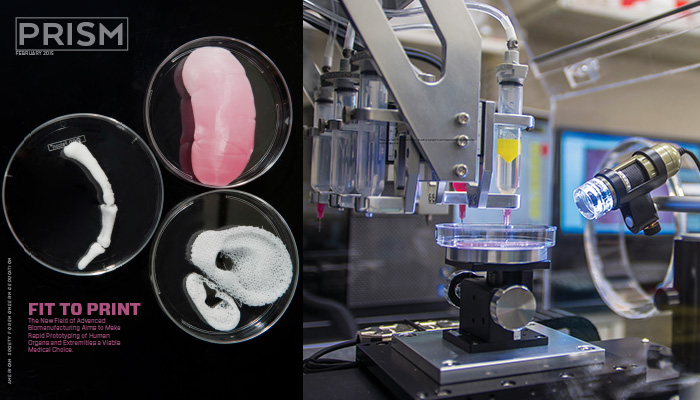Engineering Spare Body Parts
The human body is an engineering marvel, but things can go wrong with this finely tuned machine.
Athletes snap knee ligaments. Bone cartilage deteriorates, causing debilitating hip and joint pain, while heart, kidneys, and other vital organs sometimes give out. Some 25 million people worldwide suffer heart failure each year – with 4,000 awaiting transplants in the United States alone. Currently, some 113,717 people need an organ transplant, according to the nonprofit United Network for Organ Sharing, which reports a record 3,182 transplants were performed in the year that ended in January 2019.
What if replacement parts could be grown in the lab – or by patients themselves?
That’s the exciting frontier of regenerative medicine that engineers and physicians are pioneering together. Some researchers have made breakthroughs in creating living cells that replicate the function and form of their real-life counterparts. Duke University biomedical engineers, for instance, have grown 3-D heart cells that beat, while a team at Harvard’s Wyss Institute for Biologically Inspired Design are working on a heart-valve replacement made from nanofibers and researchers at Harvard Medical School the Massachusetts General Hospital grew a full-size beating heart in a bioreactor. (Photo, right)
Meanwhile, a team of more than 300 tissue engineers at Wake Forest University’s Institute for Regenerative Medicine from fields that include biomedical and chemical engineering, materials science, nanotechnology, and surgery are working to translate research into therapies. The institute was the first in the world to grow organs in a lab that were successfully transplanted into humans. Breakthroughs include bioprinting 3-D ear, bone and muscle structures that matured into functional tissue and developed a system of blood vessels when implanted in animals.
Read more about the work of Wake Forest and other tissue engineers in Human Spare Parts, ASEE Prism magazine’s February 2015 cover story. 
Filed under: Special Features
Tags: ASEE Prism magazine, biomechanical engineering, Biomedical Engineering, bioprinting, bioreactors, heart, organ transplant, regenerative medicine, STEM cell research, tissue engineering








